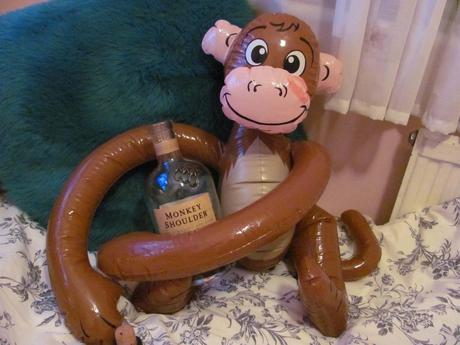
It is generally believed that the human affinity for alcohol stemmed from a love of sugar. Whilst scouring for sweet tasting foods, prehistoric man would have encountered fermenting fruits which were likely sampled and enjoyed. We do not know for certain when it happened but eventually our intelligence and resourcefulness allowed for the intentional production of alcohol. Its ritualised consumption is evident throughout history with some findings now suggesting its presence as far back as 10,000BCE.
A recent and amusing news story featuring a drunken elk stuck in a tree in Gothenburg ignited my curiosity; do other animals harbor the same desire? Scientists have identified three regions within the human genome thought to be linked to alcoholism. Within these regions there are approximately 300 individual genes to investigate before any definite conclusions can be made. Whilst current research is quite rightly focussed within human genomics, we can begin looking at animal behavior for possible similarities.
A very well known example of alcohol consumption in the animal kingdom can be found in vervet monkeys on the Caribbean island of St. Kitts. Individuals will actively seek out and steal the alcoholic beverages of holiday makers and many instances of these primates being ‘drunk and disorderly’ are documented. Our quest to learn more about alcohol in human society led to a team of researchers actively giving these animals alcohol in an experimental setting and although understandably controversial it has led to some familiar results. The study reported that of the 1000 individuals four distinct groups emerged- binge drinker, steady drinker, social drinker and teetotaller. Not only are these groups paralleled in human society, but the percentages in which they occur and the resultant behaviours were almost an exact mirror of our own.
Undoubtedly this is interesting and will possibly help to shed light on the origins and patterns of addiction. However these primates are simply taking advantage of the modern day ‘hard stuff’ they are exposed to and as a result are not known to seek out naturally occurring alcohol in the ways of our early human ancestors.
Returning to our elk, although his unfortunate situation was amusing (and for some possibly easy to identify with!) the evidence for his boozy bender is rather minimal as it is likely he got stuck whilst trying to pluck apples from the tree. If this is the case the apples would obviously be ripe and juicy as opposed to rotten and fermenting, thus meaning the poor fellow was probably just a little clumsy in his quest.
In 2008 deep in the Malaysian rainforest a team of scientists were surveying a palm plantation when they witnessed a small mammal engaging in a very strange activity. Atop of the palm was a white frothy substance much like the head on a pint of beer. This is the palm nectar, and the pentailed tree shrews were seen indiscriminately guzzling away. After documenting this practice repeatedly almost every night the scientists analysed the nectar and found it to be concentrated with as much alcohol as a standard pint (around 3.9%). These tiny mammals were taking on board the equivalent of as many as nine alcoholic units a night! Interestingly they showed none of the classic signs of drunkenness we would expect as they have a much more effective mechanism for the breakdown of alcohol, but this is still extremely significant.
Although exceptionally distant in ancestry, humans and tree shrews are related and this behavior is thought to be evidence for the taste. We’ve just had around 55 million years to learn how to loosen our mechanisms and get drunk…
